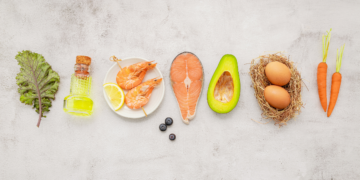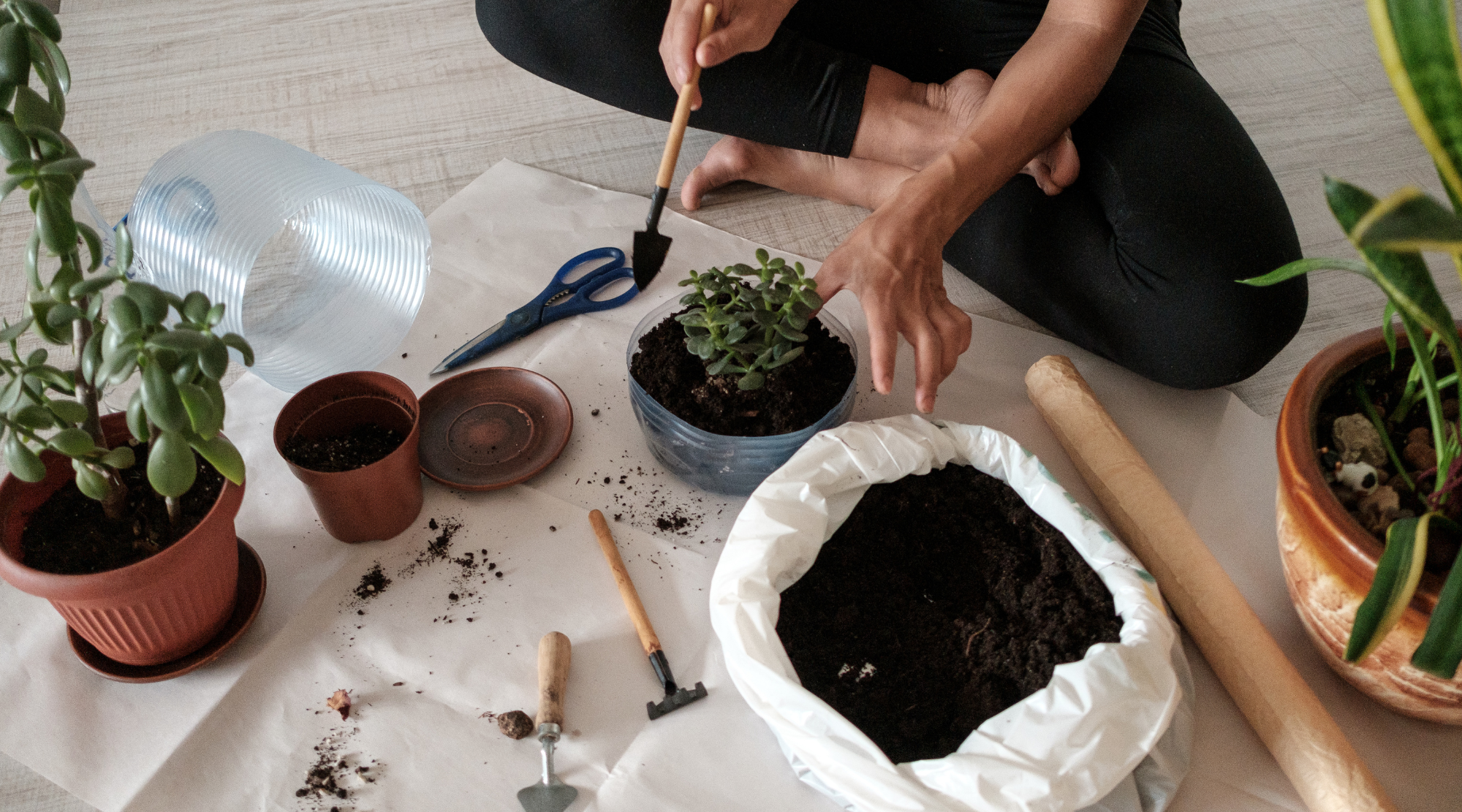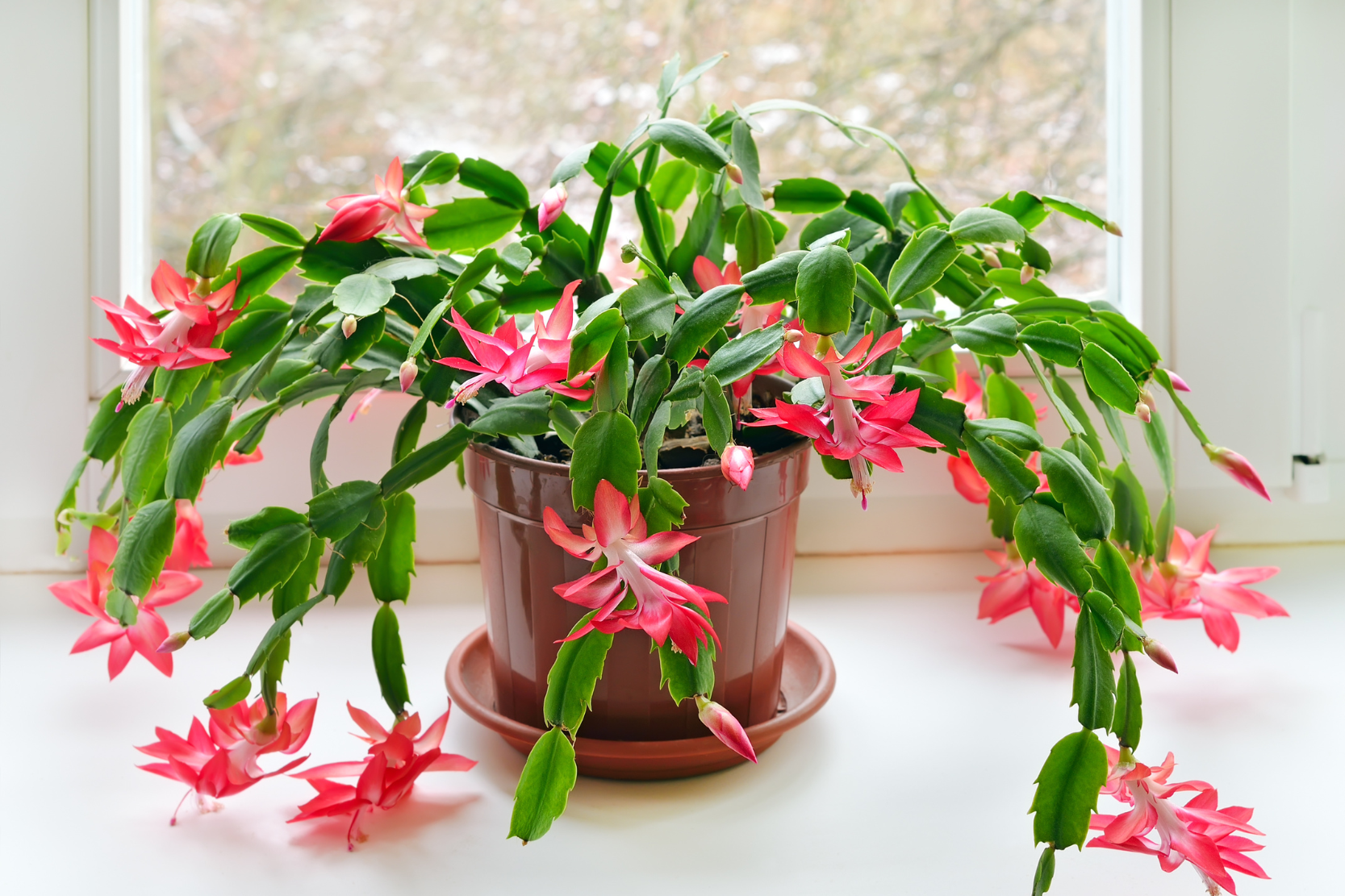Houseplants can transform a living space, adding life, greenery, and even improving air quality. For beginners, certain plants are perfect because they are resilient, easy to maintain, and tolerant of less-than-ideal conditions. Whether you’re new to gardening or have a habit of forgetting to water, these houseplants are great choices for beginners.
1. Snake Plant (Sansevieria)

Light needs: Low to bright, indirect light
Watering: Infrequent, drought-tolerant
Unique features: Known for its ability to improve air quality by removing toxins, the Snake Plant (also known as “Mother-in-law’s Tongue”) is practically indestructible. It thrives in low light, making it a great option for rooms without much sunlight, and can survive extended periods without water. Plus, its tall, architectural leaves add a sleek touch to any space.
According to NASA’s Clean Air Study, Snake Plants are among the best houseplants for improving indoor air quality by filtering toxins like formaldehyde and benzene.
Toxicity: Toxic to pets and humans when ingested, so it’s best to keep this plant out of reach of pets or young children.
2. Spider Plant (Chlorophytum comosum)
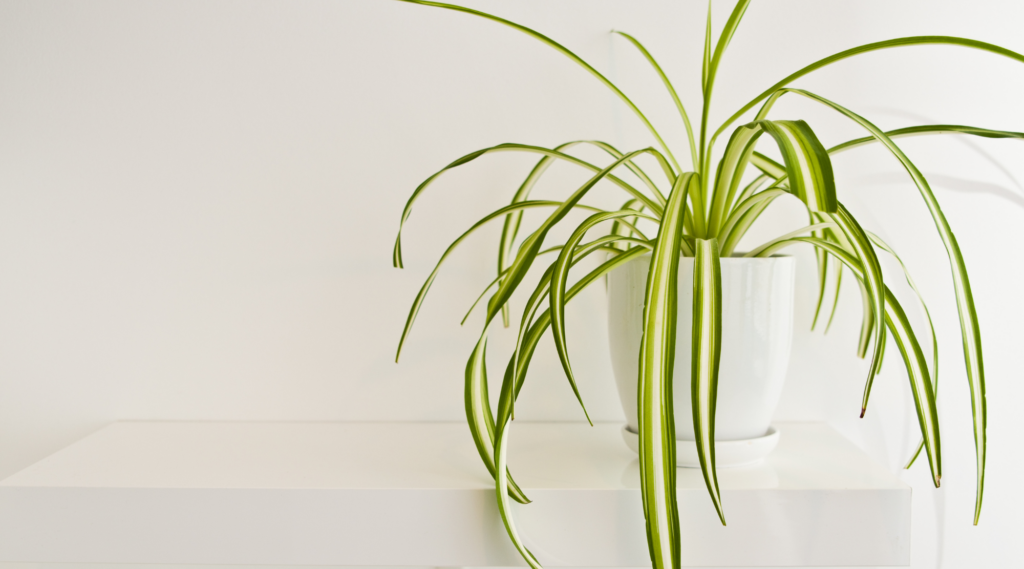
Light needs: Bright, indirect light
Watering: Moderate, but it can withstand periods of neglect
Unique features: The Spider Plant is another low-maintenance choice. It thrives in a variety of environments and is known for producing plantlets (or “baby spiders”) that hang from the mother plant, which can be repotted to create new plants. Spider plants also help filter indoor air, removing pollutants like formaldehyde.
Toxicity: Non-toxic to pets, making it a great option for pet owners.
3. ZZ Plant (Zamioculcas zamiifolia)

Light needs: Low to medium indirect light
Watering: Rarely, thrives on neglect
Unique features: The ZZ Plant is perfect for forgetful gardeners. It can handle low light conditions, only needs to be watered occasionally, and its glossy, deep-green leaves make it a visually appealing addition to any home. ZZ plants are also known for their ability to survive in poor light and neglectful care.
Toxicity: Mildly toxic to pets and humans when ingested, so caution is needed around pets or children.
4. Pothos (Epipremnum aureum)
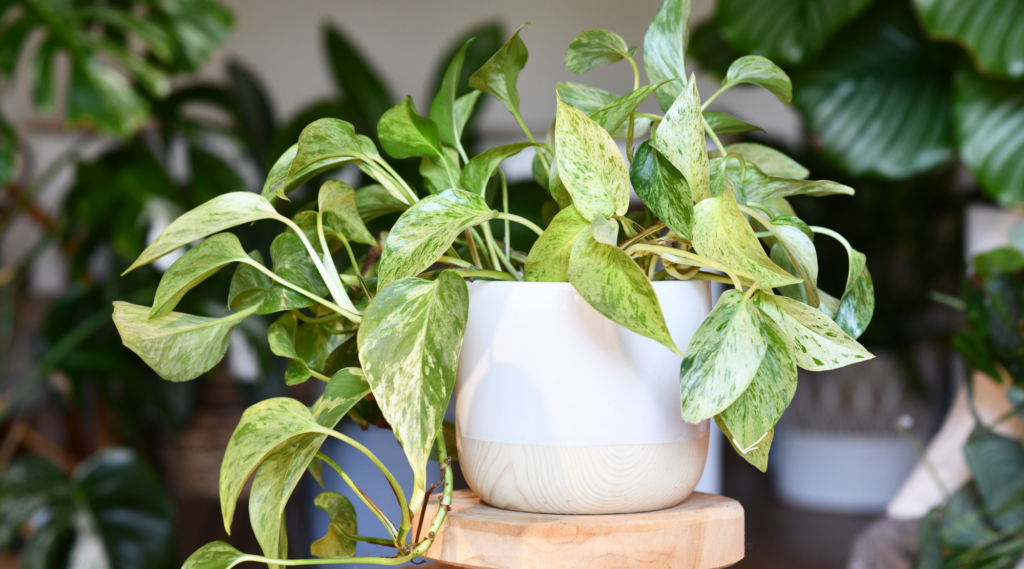
Light needs: Bright, indirect light
Watering: Let soil dry out between waterings
Unique features: Pothos, also known as Devil’s Ivy, is a popular houseplant because it is incredibly easy to grow. Its trailing vines make it a perfect option for hanging baskets or training along shelves. The plant is also forgiving of occasional neglect and low light, although it thrives best with brighter indirect light. It’s a great choice for improving indoor air quality.
Toxicity: Toxic to pets when ingested, so it’s important to keep it out of reach of cats and dogs.
5. Peace Lily (Spathiphyllum spp.)
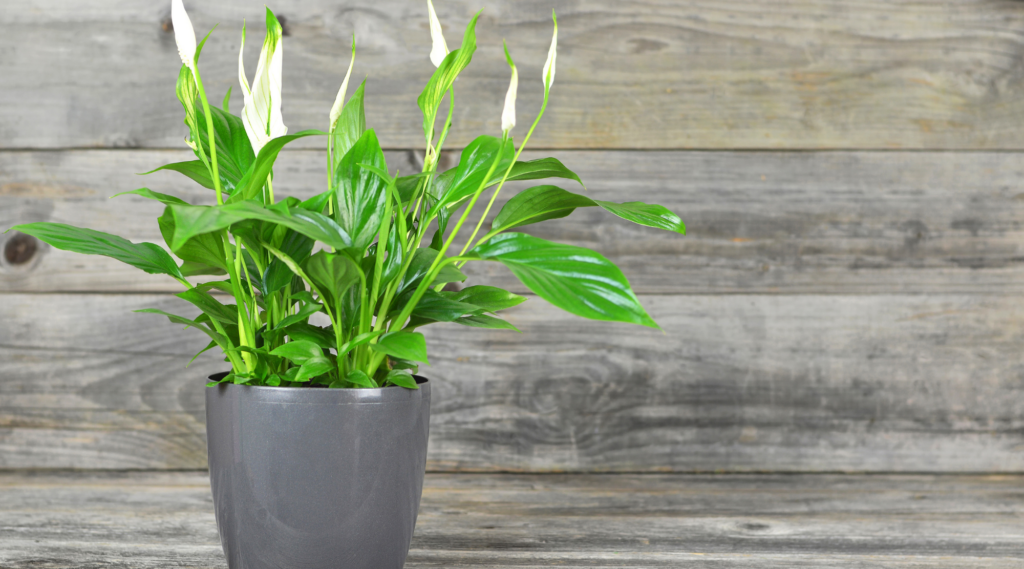
Light needs: Indirect sunlight
Watering: Keep soil consistently moist
Unique features: Peace Lilies are beloved for their striking white blooms and lush green leaves, adding elegance to any indoor space. They are also known for their air-purifying abilities, removing common toxins like ammonia, benzene, and formaldehyde from the air. Although they prefer consistently moist soil, Peace Lilies are quite forgiving if you forget to water them occasionally.
Toxicity: Toxic to pets and humans, so be cautious if you have animals or small children in the home.
6. Aloe Vera (Aloe barbadensis miller)

Light needs: Bright, indirect to direct sunlight
Watering: Water sparingly, drought-tolerant
Unique features: Aloe Vera is not only a beautiful succulent but also has practical uses, thanks to its soothing gel that can be applied to burns and cuts. It’s extremely easy to care for, as it stores water in its fleshy leaves, making it tolerant of infrequent watering. This plant thrives in bright light, so placing it near a sunny window will keep it happy.
Toxicity: Mildly toxic to pets and humans when ingested.
Aloe Vera’s gel is widely recognized for its soothing properties for skin burns and cuts. You can learn more about its health benefits through this resource from the University of Florida.
7. Cast Iron Plant (Aspidistra elatior)
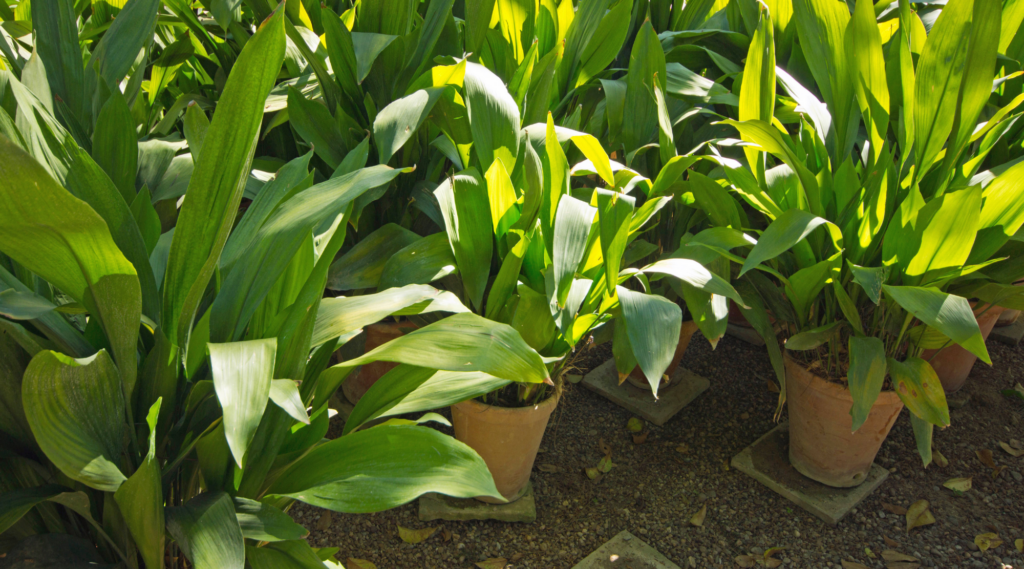
Light needs: Low light conditions
Watering: Can handle irregular watering
Unique features: True to its name, the Cast Iron Plant is incredibly resilient, thriving in almost any environment. It can handle low light, temperature fluctuations, and sporadic watering, making it a fantastic choice for those who may not have much time for plant care. Its large, dark green leaves bring a lush, tropical vibe to any room.
Toxicity: Non-toxic to pets, which makes it a safe option for households with animals.
8. Philodendron (Philodendron spp.)
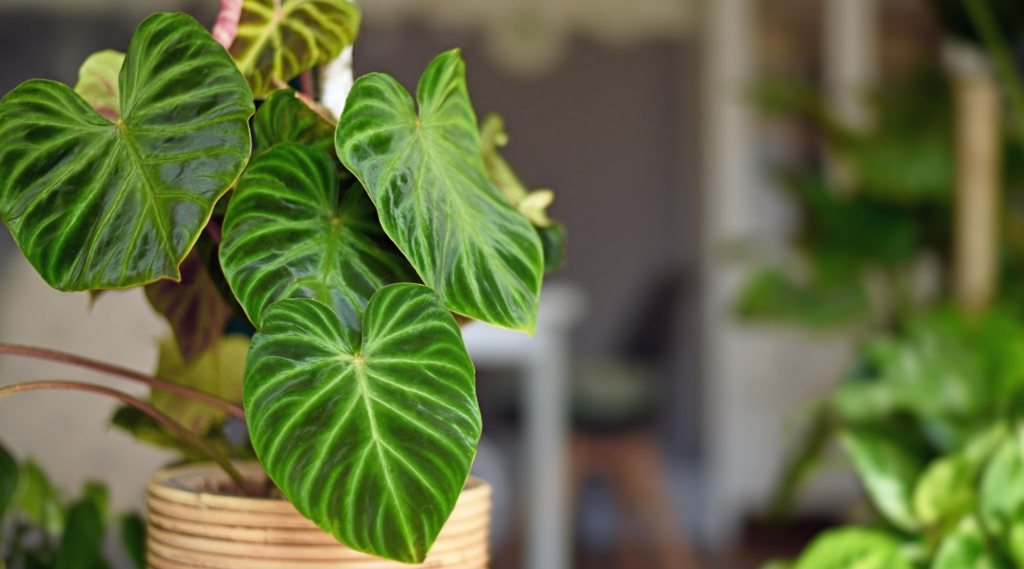
Light needs: Bright, indirect light
Watering: Moderate, keep soil slightly moist
Unique features: Philodendrons are well-loved for their attractive, glossy leaves and ease of care. There are both vining and non-climbing varieties, and they adapt well to indoor conditions. With minimal attention, these plants can thrive, making them perfect for beginners. They do well in hanging baskets or on a shelf where their vines can trail down.
Toxicity: Toxic to pets and humans if ingested, so take care to place them in safe locations.
9. Jade Plant (Crassula ovata)
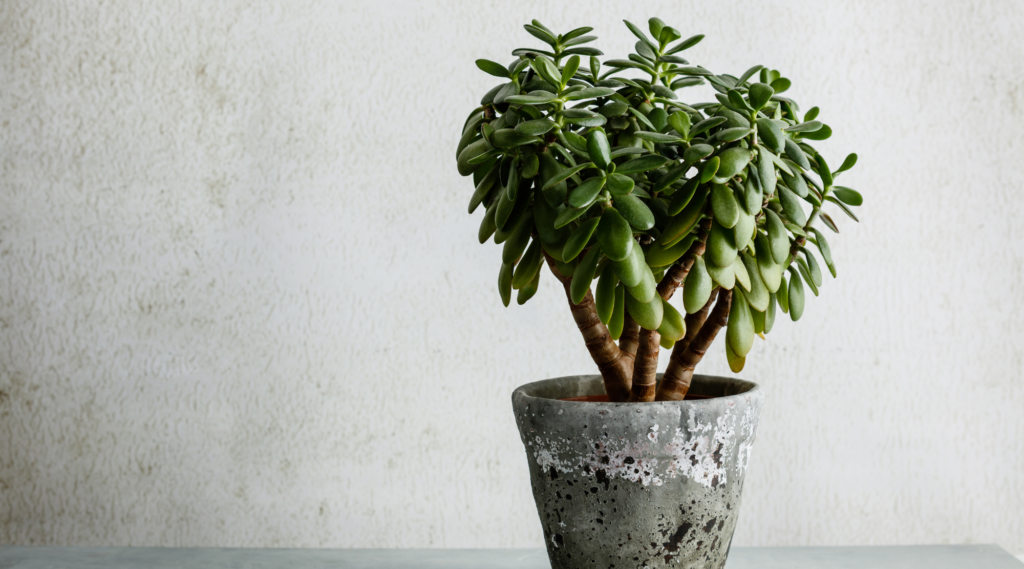
Light needs: Bright, indirect light
Watering: Allow soil to dry out between waterings
Unique features: Jade Plants are popular succulents, known for their thick, fleshy leaves and compact growth habit. They are slow growers and are believed to bring good fortune to their owners. Jade plants are drought-tolerant, meaning they can go for long periods without water, making them perfect for those who may forget to water regularly.
Toxicity: Toxic to pets, so keep them out of reach of curious animals.
10. Dragon Tree (Dracaena marginata)
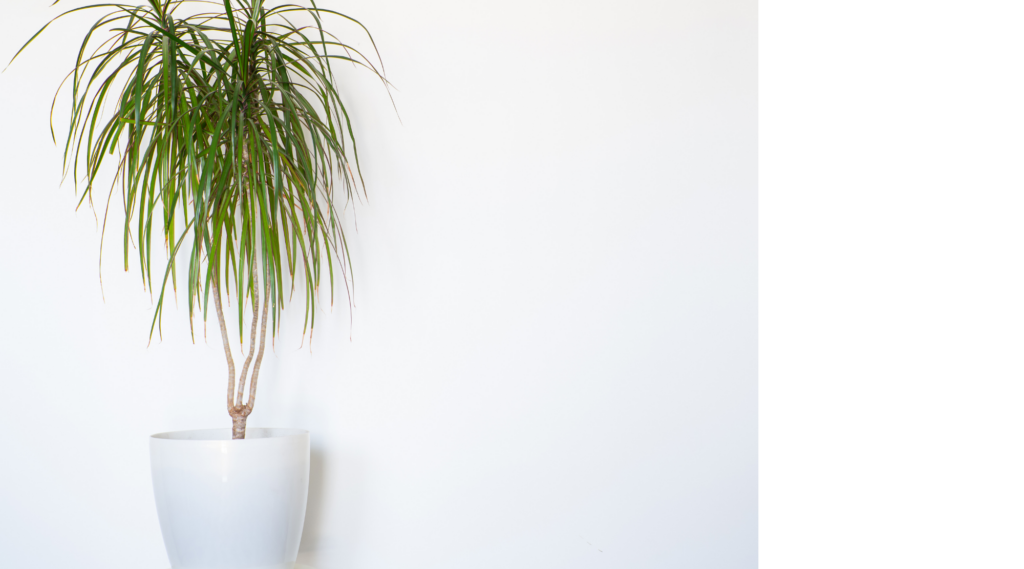
Light needs: Bright, indirect light
Watering: Water sparingly, allowing soil to dry out between waterings
Unique features: The Dragon Tree is known for its striking, sword-like leaves with red edges. It makes a bold visual statement in any indoor space and is incredibly easy to care for. This plant is forgiving of both irregular watering and varying light conditions, and it’s a great option for adding height and texture to your plant collection.
Toxicity: Toxic to pets, so it’s best to keep it out of their reach.
11. Rubber Plant (Ficus elastica)

Light needs: Bright, indirect light
Watering: Water when the top inch of soil is dry
Unique features: The Rubber Plant is another great beginner plant known for its large, shiny leaves. It’s relatively low-maintenance and adapts well to indoor conditions. It’s also an excellent air-purifying plant, which makes it a favorite among plant enthusiasts. The Rubber Plant prefers moderate watering but is tolerant of some neglect.
Toxicity: Toxic to pets and humans when ingested.
12. Lucky Bamboo (Dracaena sanderiana)
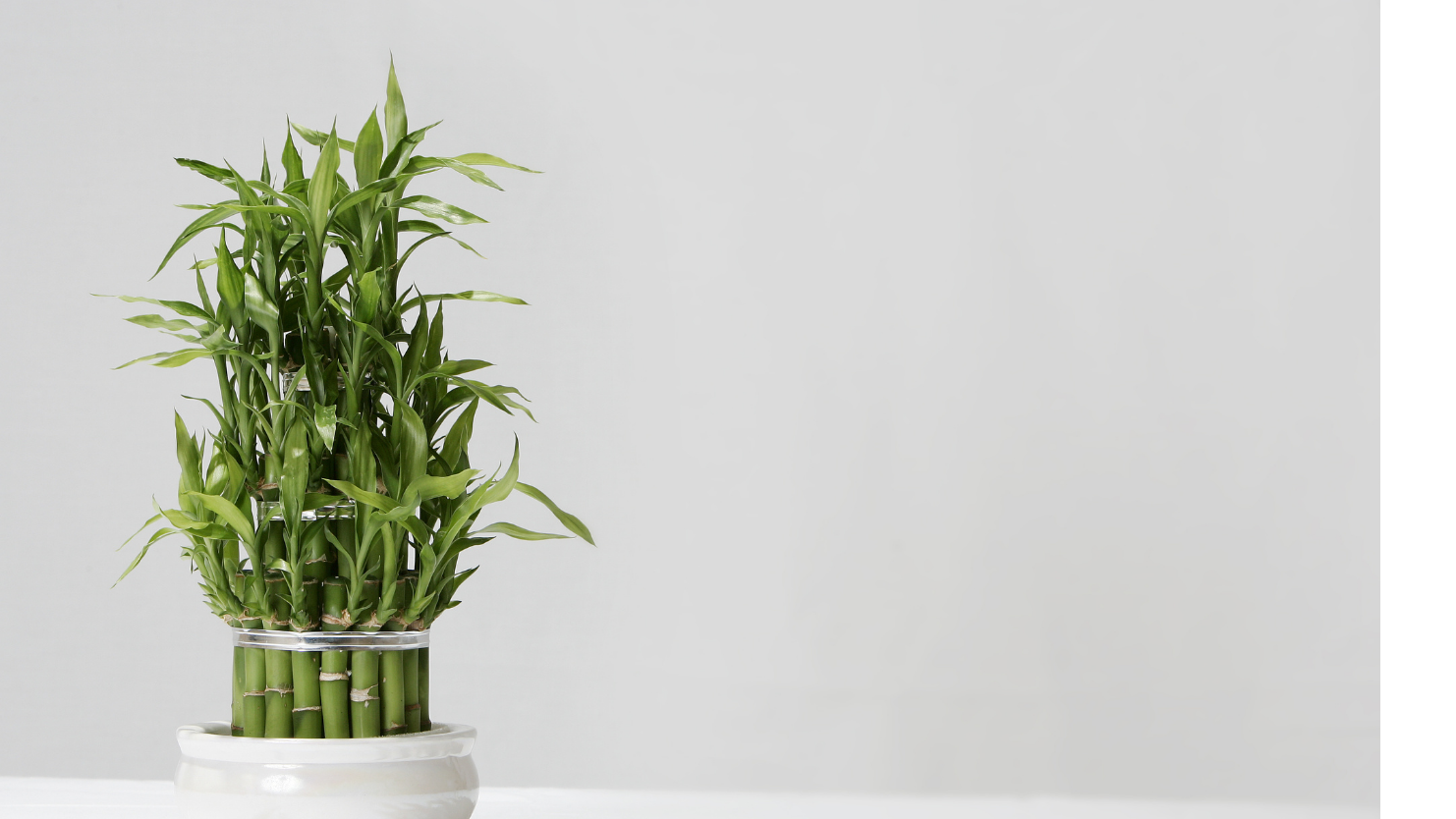
Light needs: Bright, indirect light
Watering: Keep roots in water, changing the water every couple of weeks
Unique features: Lucky Bamboo is often grown in water, and it is said to bring good fortune and positive energy to any space. This plant is incredibly easy to care for and thrives even in poor lighting conditions, making it an ideal choice for offices or areas with low natural light. Lucky Bamboo is also highly adaptable to a variety of indoor settings.
Toxicity: Toxic to pets, so ensure it’s placed out of their reach.
13. Chinese Evergreen (Aglaonema)
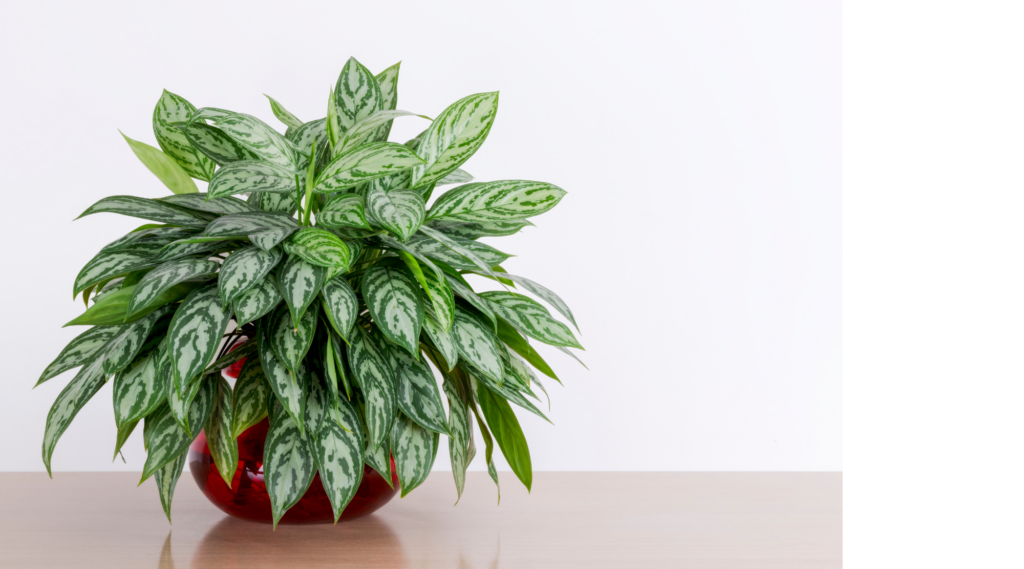
Light needs: Tolerates low to medium light
Watering: Moderate, let soil dry slightly between watering
Unique features: Chinese Evergreens are known for their stunning foliage, which can range from dark green to silver and even red in some varieties. They are incredibly hardy and forgiving plants that can tolerate a wide range of indoor conditions, making them perfect for beginners. They are also slow growers, requiring minimal upkeep.
Toxicity: Toxic to pets, so it’s best to keep this plant away from animals.
14. Ferns (Various Species)
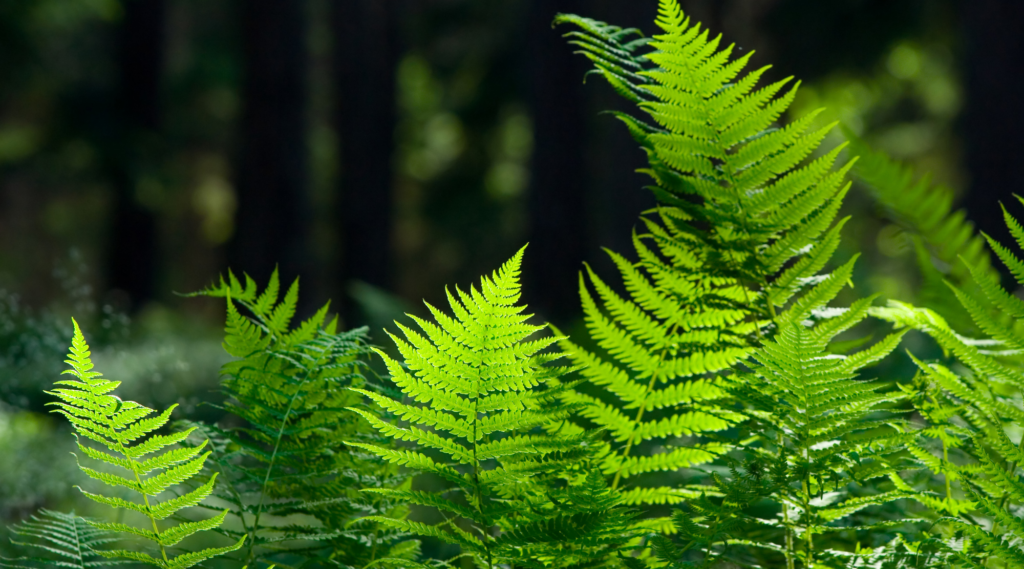
Light needs: Indirect light, high humidity
Watering: Keep soil consistently moist
Unique features: Ferns are known for their delicate, feathery fronds and ability to thrive in high-humidity environments like bathrooms. They require consistent moisture and indirect light, but if cared for properly, they add a lush, natural aesthetic to any space. Popular varieties include Boston Fern and Maidenhair Fern.
Toxicity: Some species can be toxic, so it’s important to check specific varieties.
15. Monstera Deliciosa (Swiss Cheese Plant)
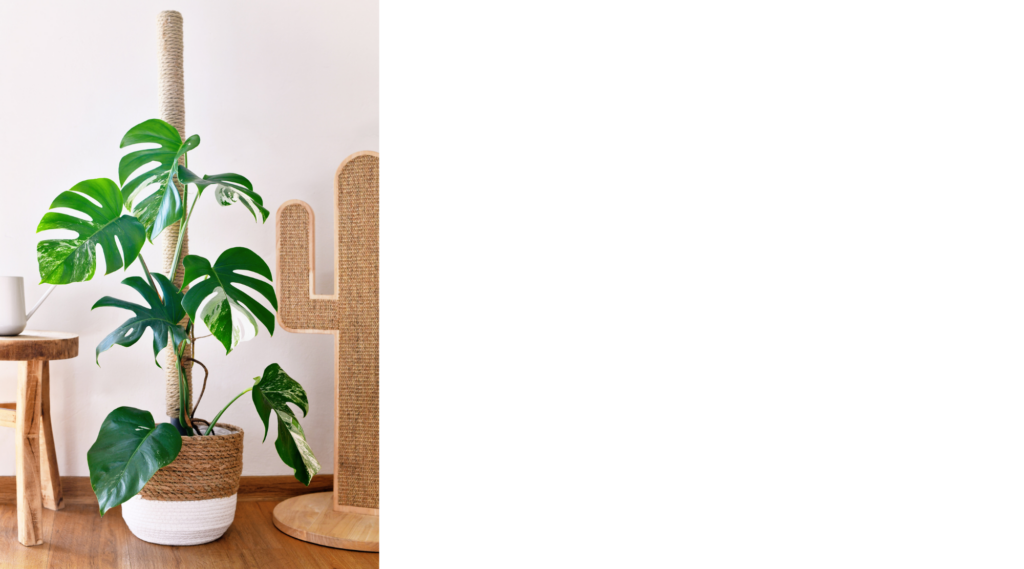
Light needs: Bright, indirect light
Watering: Allow the top inch of soil to dry between waterings
Unique features: The Monstera Deliciosa, also known as the Swiss Cheese Plant, is famous for its large, heart-shaped leaves that develop unique holes or splits as they mature. This plant is a showstopper and can grow quite large with the right care. While it prefers consistent moisture, it’s quite forgiving if you miss a watering now and then.
Toxicity: Toxic to pets and humans if ingested.
Additional Tips for New Houseplant Owners
- Pick plants that match your environment: Make sure to consider your home’s light levels, humidity, and space when choosing a plant.
- Don’t overwater: Overwatering is one of the most common reasons houseplants fail. Wait until the soil is dry before watering.
- Rotate your plants: To encourage even growth, rotate your plants occasionally so all sides get exposed to light.
If you’re new to indoor gardening and looking for essential tips to help your houseplants thrive, be sure to check out our Ultimate Beginner’s Guide to Indoor Planting.
Conclusion
Houseplants are a great way to brighten up your home, improve air quality, and add a touch of nature to your living space. With this list of easy-to-care-for houseplants, even beginners can enjoy the beauty and benefits of indoor plants without the stress of complicated maintenance. Whether you choose a Snake Plant, a Spider Plant, or a Philodendron, you’re sure to find a plant that suits your lifestyle and space.
FAQs
- What is the easiest indoor plant to care for?
- The Snake Plant is often considered the easiest due to its tolerance of low light and infrequent watering.
- How often should I water houseplants?
- Watering varies by plant, but in general, water when the top inch or two of soil is dry.
- Are houseplants safe for pets?
- Some houseplants, like the Spider Plant, are non-toxic, but many popular plants like Pothos and Peace Lilies can be harmful to pets. Always check toxicity levels before buying.
- What houseplants are good for low light?
- Low-light plants include ZZ Plants, Snake Plants, and Cast Iron Plants.
- Do houseplants really improve air quality?
- Yes, certain houseplants like Peace Lilies and Rubber Plants are known for their ability to purify indoor air.



